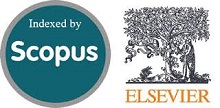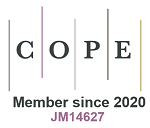The Quality of E-Government Management, Information Security and Quality
Abstract
Doi: 10.28991/ESJ-2023-07-01-016
Full Text: PDF
Keywords
References
Pérez-Morote, R., Pontones-Rosa, C., & Núñez-Chicharro, M. (2020). The effects of e-government evaluation, trust and the digital divide in the levels of e-government use in European countries. Technological Forecasting and Social Change, 154, 119973. doi:10.1016/j.techfore.2020.119973.
Salminen, M., & Hossain, K. (2018). Digitalisation and human security dimensions in cybersecurity: An appraisal for the European High North. Polar Record, 54(2), 108–118. doi:10.1017/S0032247418000268.
Miloslavskaya, N., Tolstaya, S. (2018). Organization’s Business Continuity in Cyberspace. Biologically Inspired Cognitive Architectures (BICA) for Young Scientists, BICA 2017, Advances in Intelligent Systems and Computing, 636. Springer, Cham, Switzerland. doi:10.1007/978-3-319-63940-6_41.
Anderson, R., & Moore, T. (2006). The economics of information security. Science, 314(5799), 610-613. doi:10.1126/science.1130992.
McLaughlin, M. D., & Gogan, J. (2018). Challenges and best practices in information security management. MIS Quarterly Executive, 17(3), 1-12.
Deakin, M. (2014). Smart Cities: the state-of-the-art and governance challenge. Triple Helix, 1(1), 1-16. doi:10.1186/s40604-014-0007-9.
Stewart, T. M. (2022). A Generic Qualitative Study: What Are the Recommendations for Implementing an e-Government System. Ph.D. Thesis, Capella University, Minneapolis, United States.
Aritonang, D. M. (2017). The Impact of E-Government System on Public Service Quality in Indonesia. European Scientific Journal, 13(35), 99-111. doi:10.19044/esj.2017.v13n35p99.
Grout, P. A., & Stevens, M. (2003). The assessment: Financing and managing public services. Oxford Review of Economic Policy, 19(2), 215–234. doi:10.1093/oxrep/19.2.215.
Ferlie, E., Hartley, J., & Martin, S. (2003). Changing Public Service Organizations: Current Perspectives and Future Prospects. British Journal of Management, 14(s1), S1–S14. doi:10.1111/j.1467-8551.2003.00389.x.
Margetts, H. (2021). Public management change and e-government: The emergence of digital-era governance. Routledge Handbook of Internet Politics, 130–146, Routledge, United Kingdom. doi:10.4324/9780203962541-16.
Oden, M., & Strover, S. (2002). Links to the Future: The Role of Information and Telecommunications Technology in Appalachian Economic Development. Appalachian Regional Commission, University of Texas, Austin, United States.
Malodia, S., Dhir, A., Mishra, M., & Bhatti, Z. A. (2021). Future of e-Government: An integrated conceptual framework. Technological Forecasting and Social Change, 173. doi:10.1016/j.techfore.2021.121102.
Glyptis, L., Christofi, M., Vrontis, D., Giudice, M. Del, Dimitriou, S., & Michael, P. (2020). E-Government implementation challenges in small countries: The project manager’s perspective. Technological Forecasting and Social Change, 152, 119880. doi:10.1016/j.techfore.2019.119880.
Hartley, J. (2005). Innovation in governance and public services: Past and present. Public Money and Management, 25(1), 27–34. doi:10.1111/j.1467-9302.2005.00447.x.
Torchia, M., Calabrò, A., & Huse, M. (2011). Women Directors on Corporate Boards: From Tokenism to Critical Mass. Journal of Business Ethics, 102(2), 299–317. doi:10.1007/s10551-011-0815-z.
Holzer, H. (2015). Job market polarization and US worker skills: A tale of two middles. Economic Studies, the Brookings Institution, Washington, United States.
Vevera, A. V, & Udroiu, A. M. (2018). Cost Analysis for Cyberattack. Romanian Journal of Information Technology and Automatic Control, 28(4), 7–12. (In Romanian).
Vasiu, I., & Vasiu, L. (2018). Cybersecurity as an Essential Sustainable Economic Development Factor. European Journal of Sustainable Development, 7(4), 171–178. doi:10.14207/ejsd.2018.v7n4p171.
Zheng, Y. (2015). Trajectory data mining: An overview. ACM Transactions on Intelligent Systems and Technology, 6(3), 1–41. doi:10.1145/2743025.
Dhillon, G., & Backhouse, J. (2001). Current directions in IS security research: towards socio-organizational perspectives. Information Systems Journal, 11(2), 127–153. doi:10.1046/j.1365-2575.2001.00099.x.
Alshehri, M., Drew, S., Alhussain, T., & Alghamdi, R. (2012). The Effects of Website Quality on Adoption of E-Government Service: AnEmpirical Study Applying UTAUT Model Using SEM. arXiv preprint. doi:10.48550/arXiv.1211.2410.
Santos, R. B., Hart, P. W., Jameel, H., & Chang, H. M. (2013). Wood based lignin reactions important to the biorefinery and pulp and paper industries. BioResources, 8(1), 1456–1477. doi:10.15376/biores.8.1.1456-1477.
Nabafu, R., & Maiga, G. (2012). A Model of Success Factors for Implementing Local E-government in Uganda. Electronic Journal of E-Government: EJEG; Reading, 10(1), 31–46.
Shackleton, P. & Dawson, L. (2007). Doing it tough: factors impacting on local e-Government Mmaturity. 20th Bled eConference eMergence: Merging and Emerging Technologies, Processes, and Institutions, 3-6 June, 2007, Bled, Slovenia.
Dias, G. P., & Gomes, H. (2014). Evolution of local e-government maturity in Portugal. 2014 9th Iberian Conference on Information Systems and Technologies (CISTI). doi:10.1109/cisti.2014.6877041.
Al-Jaghoub, S., Al-Yaseen, H., & Al-Hourani, M. (2010). Evaluation of Awareness and Acceptability of Using e Government Services in Developing Countries: The Case of Jordan. Electronic Journal of Information Systems Evaluation, 13(1), 1-8.
Zaidi, S. F. H., & Qteishat, M. K. (2012). Assessing e-government service delivery (government to citizen). International journal of e-business and e-government studies, 4(1), 45-54.
Carter, L., Yoon, V., & Liu, D. (2022). Analyzing e-government design science artifacts: A systematic literature review. International Journal of Information Management, 62, 102430. doi:10.1016/j.ijinfomgt.2021.102430.
Khan, S., Umer, R., Umer, S., & Naqvi, S. (2021). Antecedents of trust in using social media for E-government services: An empirical study in Pakistan. Technology in Society, 64, 101400. doi:10.1016/j.techsoc.2020.101400.
Bulgurcu, Cavusoglu, & Benbasat. (2010). Information Security Policy Compliance: An Empirical Study of Rationality-Based Beliefs and Information Security Awareness. MIS Quarterly, 34(3), 523. doi:10.2307/25750690.
Da Veiga, A., & Eloff, J. H. P. (2010). A framework and assessment instrument for information security culture. Computers & Security, 29(2), 196–207. doi:10.1016/j.cose.2009.09.002.
Grossmann, K., Connolly, J. J. T., Dereniowska, M., Mattioli, G., Nitschke, L., Thomas, N., & Varo, A. (2022). From sustainable development to social-ecological justice: Addressing taboos and naturalizations in order to shift perspective. Environment and Planning E: Nature and Space, 5(3), 1405–1427. doi:10.1177/25148486211029427.
Wimmer, M., & Von Bredow, B. (2002). A holistic approach for providing security solutions in e-government. Proceedings of the 35th Annual Hawaii International Conference on System Sciences. doi:10.1109/hicss.2002.994083.
Sorensen, J. A., Brewer, D., Wyckoff, L., Horsman, M., Scott, E., & May, J. J. (2013). Building safety partnerships using social network analysis. Social Marketing Quarterly, 19(2), 67–75. doi:10.1177/1524500413483457.
Ullah, M. N., Mahmood, A., Razzaq, S., Ilahi, M., Khan, R. D., & Javaid, N. (2013). A survey of different residential energy consumption controlling techniques for autonomous DSM in future smart grid communications. arXiv preprint arXiv:1306.1134. doi:10.48550/arXiv.1306.1134.
Vicente, M. R., & Novo, A. (2014). An empirical analysis of e-participation. The role of social networks and e-government over citizens’ online engagement. Government Information Quarterly, 31(3), 379–387. doi:10.1016/j.giq.2013.12.006.
Parasuraman, A., Zeithaml, V. A., & Malhotra, A. (2005). E-S-QUAL a multiple-item scale for assessing electronic service quality. Journal of Service Research, 7(3), 213–233. doi:10.1177/1094670504271156.
Zissis, D., & Lekkas, D. (2011). Securing e-Government and e-Voting with an open cloud computing architecture. Government Information Quarterly, 28(2), 239–251. doi:10.1016/j.giq.2010.05.010.
Mensah, I. K., Jianing, M., & Durrani, D. K. (2017). Factors influencing citizens’ intention to use e-government services: A case study of South Korean students in China. International Journal of Electronic Government Research, 13(1), 14–32. doi:10.4018/IJEGR.2017010102.
Posthumus, S., & Von Solms, R. (2004). A framework for the governance of information security. Computers and Security, 23(8), 638–646. doi:10.1016/j.cose.2004.10.006.
Martin, M. (2011). Cutadapt removes adapter sequences from high-throughput sequencing reads. EMBnet.Journal, 17(1), 10-12. doi:10.14806/ej.17.1.200.
Von Solms, B. (2005). Information Security governance: COBIT or ISO 17799 or both? Computers and Security, 24(2), 99–104. doi:10.1016/j.cose.2005.02.002.
Siponen, M., & Vance, A. (2010). Neutralization: New insights into the problem of employee information systems security policy violations. MIS quarterly, 34(3), 487-502. doi:10.2307/25750688.
Lee, H., & Kim, C. (2014). Benchmarking of service quality with data envelopment analysis. Expert Systems with Applications, 41(8), 3761–3768. doi:10.1016/j.eswa.2013.12.008.
Ifinedo, P. (2018). Roles of organizational climate, social bonds, and perceptions of security threats on IS security policy compliance intentions. Information Resources Management Journal, 31(1), 53–82. doi:10.4018/IRMJ.2018010103.
Sá, F., Rocha, Á., & Cota, M. P. (2016). Potential dimensions for a local e-Government services quality model. Telematics and Informatics, 33(2), 270–276. doi:10.1016/j.tele.2015.08.005.
Khawaja, A. R., Bokhari, S. M. A., Rasheed, T., Shahzad, A., Hanif, M., Qadeer, F., & Jafferany, M. (2015). Disease Severity, Quality of Life, and Psychiatric Morbidity in Patients with Psoriasis With Reference to Sociodemographic, Lifestyle, and Clinical Variables. The Primary Care Companion for CNS Disorders. doi:10.4088/pcc.14m01629.
Gibbs, J. L., & Kraemer, K. L. (2004). A Cross-Country Investigation of the Determinants of Scope of E-commerce Use: An Institutional Approach. Electronic Markets, 14(2), 124–137. doi:10.1080/10196780410001675077.
Hien, N. M. (2014). A study on evaluation of e-government service quality. International Journal of Humanities and Social Sciences, 8(1), 16-19. doi:10.5281/zenodo.1336168.
Posthumus, S., von Solms, R. (2005). A Responsibility Framework for Information Security. Security Management, Integrity, and Internal Control in Information Systems. IICIS 2004. IFIP International Federation for Information Processing, 193. Springer, Boston, United States. doi:10.1007/0-387-31167-X_13.
Lee, W. J., & Lucey, J. A. (2004). Structure and physical properties of yogurt gels: Effect of inoculation rate and incubation temperature. Journal of Dairy Science, 87(10), 3153–3164. doi:10.3168/jds.S0022-0302(04)73450-5.
Frisbie, D. D., Cross, M. W., & McIlwraith, C. W. (2006). A comparative study of articular cartilage thickness in the stifle of animal species used in human pre-clinical studies compared to articular cartilage thickness in the human knee. Veterinary and Comparative Orthopaedics and Traumatology, 19(3), 142–146. doi:10.1055/s-0038-1632990.
Klischewski, R., & Scholl, H. J. (2008). Information quality as capstone in negotiating e-government integration, interoperation and information sharing. Electronic Government, 5(2), 203–225. doi:10.1504/EG.2008.016647.
Amaldas, C., Shankaranarayanan, A., & Gemba, K. (2012). Technology Instigated Learning Outcomes (TILO): A Management of Technology (MOT) based framework for enabling student needs inside and outside the classroom environment. Proceedings of the International Conference on e-Learning, e-Business, Enterprise Information Systems, and e-Government (EEE’12), 16-19 July, 2012, Las Vegas, United States.
DOI: 10.28991/ESJ-2023-07-01-016
Refbacks
Copyright (c) 2022 Aferdita Qekaj-Thaçi






